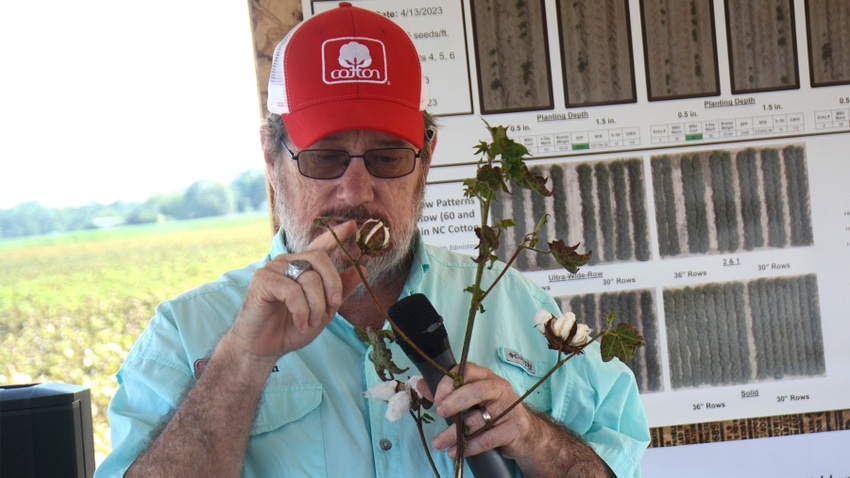
Every year is challenging when it comes to defoliation decisions for cotton farmers, and this year is no different.
North Carolina State University Extension Cotton Specialist Keith Edmisten says there are basically two cotton crops in North Carolina in 2023: a good crop, and a bad crop, in addition to crops that are between both good and bad.
That’s going to make defoliation decisions challenging for cotton farmers this year.
“We got a lot of cotton that just didn’t get rain in August, and it’s going to be below average. It’s probably got a lot of residual nitrogen. It’s mature. Most of it could be defoliated now if it hasn’t already been defoliated so it has the potential to regrow,” Edmisten said at the North Carolina Cotton Field Day Sept. 14 at the Upper Coastal Plain Research Center in Rocky Mount Sept. 14.
Edmisten said parts of North Carolina that got the rain levels cotton needs should see a good crop this year.
Edmisten notes that with warm conditions, and if more rain comes, residual nitrogen could be a concern, leading to more plant growth. In these incidences, cotton farmers may need to use higher rates of the plant growth regulator Thidiazuron if they want longer regrowth control.
“The most challenging thing about defoliation is maybe not so much what to use and what rate to use, but it’s to get started on time. And I realize part of the problem with that is you’ve got other things going on. We’ve always talked about that it’s safe to defoliate when 60% of the bolls are open,” Edmisten said.
Edmisten says one method used to time defoliation is counting the nodes above cracked bolls. This is done by selecting plants with a first-position cracked boll (cracked enough that lint is visible) and counting the nodes above the crack boll up to the highest node with a harvestable boll. Edmisten provided a demonstration at the field day.
In the N.C. State Extension cotton publication, Edmisten notes that this technique provides more emphasis on the unopened portion of the crop than the percent open. A count of four nodes above cracked bolls is usually safe for defoliation.
“If you have low plant populations (less than two plants per foot of row), a count of three nodes above cracked bolls would be safer. Low plant population results in a less mature crop because of the number of bolls set on vegetative branches and outer positions of the fruiting branches,” Edmisten writes in the publication.
About the Author(s)
You May Also Like






